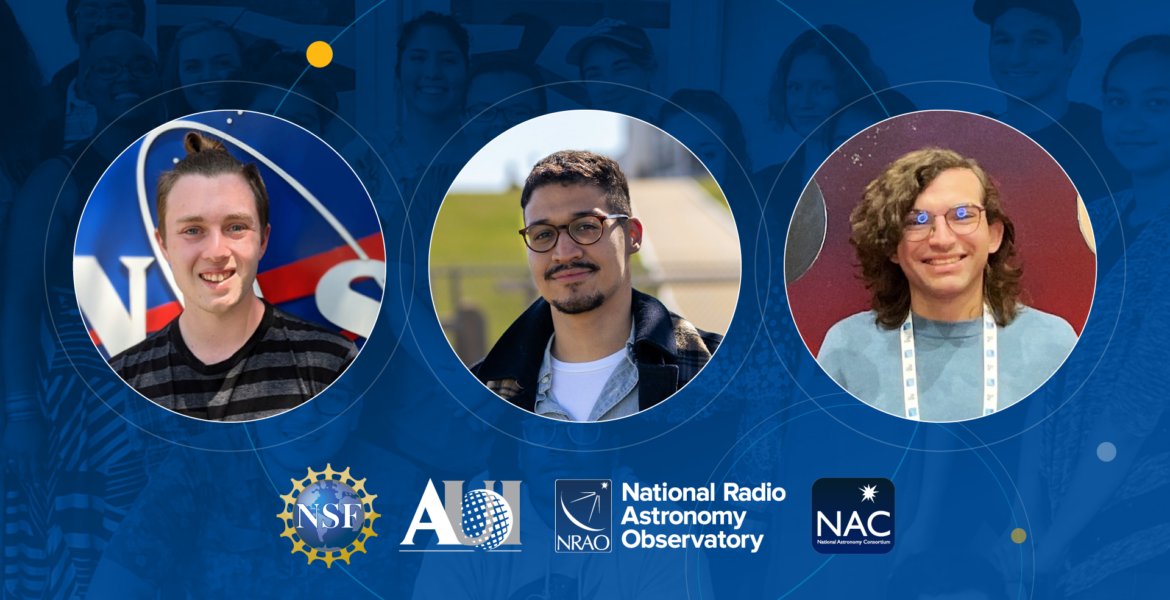The U.S. National Science Foundation National Radio Astronomy Observatory (NSF NRAO), in partnership with several leading Mexican universities and research institutes, has announced a series of landmark agreements and meetings aimed at advancing Mexico’s role in the Next Generation Very Large Array (ngVLA) project.
Recent News
Astronomers Discover a Superheated Star Factory in the Early Universe
Astronomers have uncovered a previously unknown, extreme kind of star factory by taking the temperature of a distant galaxy using the ALMA telescope. The galaxy is glowing intensely in superheated cosmic dust while forming stars 180 times faster than our own Milky Way.
Astronomers Share Largest Molecular Survey To-date: GOTHAM Legacy Data Goes Public
Astronomers in the “GBT Observations of TMC-1: Hunting Aromatic Molecules” research survey, known as GOTHAM, have released a spectral line survey with largest amount of telescope time ever conducted, charting more than 100 molecular species only found in deep space.
AUI and the NRAO Announce Recipients of the 2024 NAC Bridge Scholarship Award

NAC Bridge Scholarship Awardees. Credit: Jeff Hellerman
AUI and the U.S National Science Foundation National Radio Astronomy Observatory (NSF NRAO) have announced the recipients of the 2024 AUI Board of Trustees NAC Bridge Scholarship Award. Now in its fourth year, the scholarship recognizes the academic accomplishments of National Astronomy Consortium (NAC) alums and assists them in the transition from undergraduate to graduate programs.
Amidst the excitement of beginning graduate school and the financial considerations of tuition, there can be additional financial burdens related to moving to a new location and establishing a new residence. The AUI Board of Trustees established the new NAC scholarship award in 2021 to help NAC alums manage these expenses during the transition to the next phase of their academic careers.
This year, three NAC alums have accepted offers from outstanding graduate programs. Each will receive a $5,000 AUI Board of Trustees NAC Bridge Scholarship Award, with AUI and NSF NRAO’s congratulations and best wishes for a smooth start to an exciting new chapter of their lives.
2024 Recipients of the NAC Bridge Scholarship Award:
- Nicolas McMahon, Rochester Institute of Technology, Astrophysical Sciences and Technology
- Daniel Gallego, University of Strasbourg, Quantum Science & Nanomaterials
- Carlos Ortiz Quintana, University of Central Florida, Planetary Sciences
NAC is a competitive program offering summer astronomy research internships to undergraduates and professional development programming and research opportunities throughout the academic careers of NAC alumni. NAC’s goal is to increase the number of students, often underserved by the traditional academic pipeline, in STEM and STEM careers, by creating a diverse network of support for their academic and professional careers from an early stage.
“Generous funding from NAC allowed me to go to three academic conferences in one semester to share my research and build my science communication skills,” said Nicolas McMahon. “I wholeheartedly believe that my NAC experience was instrumental in helping me gain admission to the PhD program, and I wouldn’t have been able to do it without the endless support of my NAC and STScI mentors.”
A key component of the NAC program has been the long-term sustained engagement of alums and, perhaps most importantly, the peer and near-peer support that NAC alums offer to each other. “The doors that NAC opened for me also helped me solidify my desire to pursue graduate studies in astrophysics,” said Daniel Gallego. “I truly believe my acceptance into the NAC program was a milestone in my academic career.”
Carlos Ortiz Quintana agrees. “The NAC was an incredible experience that equipped me with the essential tools for academic and professional success in a department with limited opportunities in astronomy.”
NSF NRAO and AUI appreciate the commitment that NAC alums have to each other and to their own professional journeys, and are proud of their individual and collective accomplishments.
About NAC
National Astronomy Consortium (NAC) is a program of the U.S. National Science Foundation National Radio Astronomy Observatory, operated under cooperative agreement by Associated Universities, Inc. NAC is a summer research experience program for undergraduate students in the United States who have been under-served by the traditional academic pipeline. The program aims to increase the number of students in STEM fields by helping them to build networks of support for success early in their academic careers and beyond.
This news article was originally published on the NRAO website on July 1, 2024.
Recent News
NSF National Radio Astronomy Observatory and Mexican Institutions Sign Historic Agreements to Advance ngVLA Collaboration
The U.S. National Science Foundation National Radio Astronomy Observatory (NSF NRAO), in partnership with several leading Mexican universities and research institutes, has announced a series of landmark agreements and meetings aimed at advancing Mexico’s role in the Next Generation Very Large Array (ngVLA) project.
Astronomers Discover a Superheated Star Factory in the Early Universe
Astronomers have uncovered a previously unknown, extreme kind of star factory by taking the temperature of a distant galaxy using the ALMA telescope. The galaxy is glowing intensely in superheated cosmic dust while forming stars 180 times faster than our own Milky Way.
Astronomers Share Largest Molecular Survey To-date: GOTHAM Legacy Data Goes Public
Astronomers in the “GBT Observations of TMC-1: Hunting Aromatic Molecules” research survey, known as GOTHAM, have released a spectral line survey with largest amount of telescope time ever conducted, charting more than 100 molecular species only found in deep space.
